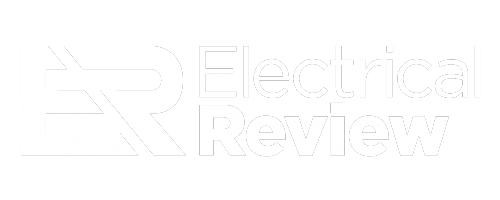Jean-Marc Guillou, Chief Technology Officer at Socomec, explores how advanced analytics and predictive intelligence could fundamentally reshape how we store and manage renewable power.
It’s expected that the UK will consume 50% more electricity than it does today by 2035, and that presents quite the dilemma for a country legally committed to achieving net zero by 2050. That’s why it’s vitally important that 60 GW of short-term flexible capacity, from flexible power sources such as battery energy storage, is available to deal with peaks and troughs in renewable generation to meet demand.
There are other ways to deal with the increasing need for electricity, of course. Demand-side measures, such as energy efficiency improvements, as well as an increased focus towards installing onsite renewable generation and battery energy storage at large energy consumers, can also help tackle the challenge.
However, no matter what solution you choose – it’s clear that batteries will be key to our energy revolution. Yet, the consequent need for fast, frequent charging and discharging at short notice risks pushing batteries beyond their design limitations and jeopardising safety, durability and performance.
Thankfully, recent advances in AI could help us overcome these risks and prepare batteries for the new demands of the energy transition.
A grid under growing stress
The accelerating electrification and digitalisation of the economy will heavily tax the grid, with data centres alone projected to account for 6% of UK electricity demand. Balancing this increased demand with more fluctuating supply from renewable power sources entails a transition towards smarter grids where demand is managed at the ‘edge’ of networks through onsite energy storage. At the same time, grids will need to draw on decentralised power reserves, such as from battery energy storage systems, in commercial and industrial batteries.
Battery energy storage systems will have to shoulder a broader range of responsibilities – from peak shaving (reducing peaks in grid demand) to providing flexible power capacity. This will push batteries to their limits as they must match their charge and discharge cycles to a more diverse and shifting array of needs.
The looming digital transformation of energy
The National Energy System Operator (NESO) predicts that increasing energy system complexity, including the mass participation of distributed energy resources such as batteries in balancing markets, will require an accompanying digital transformation. Technologies such as data analytics and AI will be essential both to control consumption, as well as to coordinate supply and demand across a more complex, decentralised system. The same technologies will also be essential to prepare batteries for the new patterns of use needed to support the energy transition.
Traditional battery management systems lack the sophisticated analytical and predictive capabilities to manage the stresses batteries will face from faster and more frequent cycles. Many only capture data retrospectively and in an incomplete, unstructured form which is unusable for machine learning systems.
These systems cannot predict safety hazards such as thermal runaway, where battery temperatures rise uncontrollably, until hours or even minutes before the incident. They can often only estimate state of charge or state of health with about 90% confidence. As the energy transition accelerates, this could expose batteries to safety risks and accelerated degradation.
We need a fundamental digital transformation in battery management to accompany the new demands they will face.
The predictive potential of AI
Some battery operators are now harnessing the predictive power of AI to intelligently adjust battery cycles to the diverse demands of the energy transition and enhance battery health, performance and longevity.
Firstly, AI can now improve the quality of battery data through analytic tools customised to automatically find missing files, timestamps or other gaps to create more consistent and complete datasets. In this way, AI itself is helping prepare battery data for use by other AI applications.
This improved data can then be harnessed to drive a step-change in battery management. For example, AI can now predict hidden causes of damage or degradation months in advance, enabling smart predictive maintenance strategies that reduce safety hazards and maintenance costs.
The same technologies could help proactively improve performance and longevity by predictively optimising battery cycles. Tests have shown AI can predict the perfect patterns of use to reduce degradation and maintain a high level of performance over their full 20-year lifetime. The latest advances in AI can predict battery state of charge or state of health with 98% accuracy, allowing operators to confidently predict how different usage patterns will affect batteries.
These insights could help design the ideal battery management strategies for all the diverse demands of the energy transition from frequency or voltage regulation and short-term flexible capacity to peak shaving. AI-powered battery management could also be designed to help consumers reduce energy waste, further improving cost and carbon efficiency.
In addition to transforming the management of the existing battery stock, AI could even harness lessons learned from battery management to drive smarter future designs. This would create a virtuous circle where today’s battery data fuels tomorrow’s battery development.
Preparing batteries for the challenge of the energy transition
Balancing increasing electricity demand with more intermittent renewable supply will see batteries play a greater role than ever before, flattening out peaks in consumption and integrating more clean power into grids. Yet fulfilling these demands will also mean putting batteries through faster and more frequent battery cycles than they were designed for, potentially creating safety hazards, damage and premature degradation.
This calls for a fundamental overhaul of battery management strategies drawing on advanced analytics and AI to predictively optimise maintenance and management around improving battery performance and longevity. We need to move from retrospective analysis and reactive strategies towards proactive predictive monitoring and management. Ultimately, the data we generate today could create better battery designs that significantly increase future power grid flexibility.


